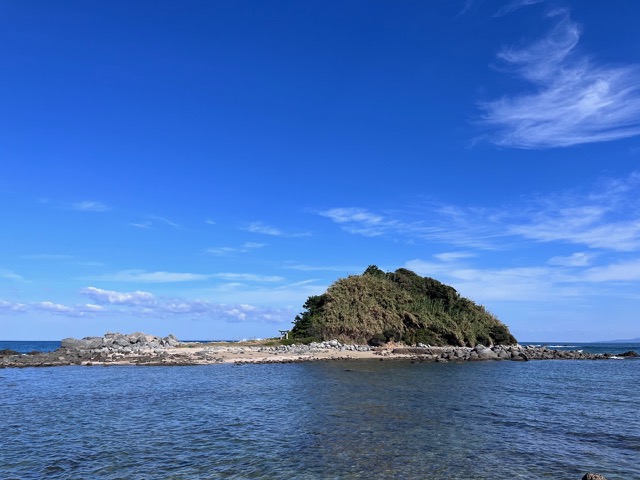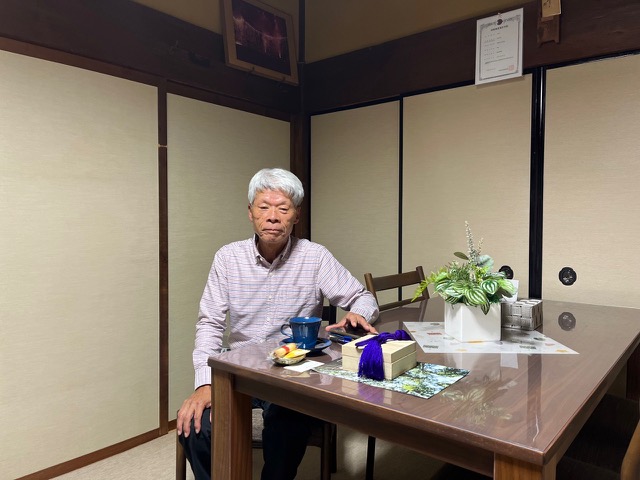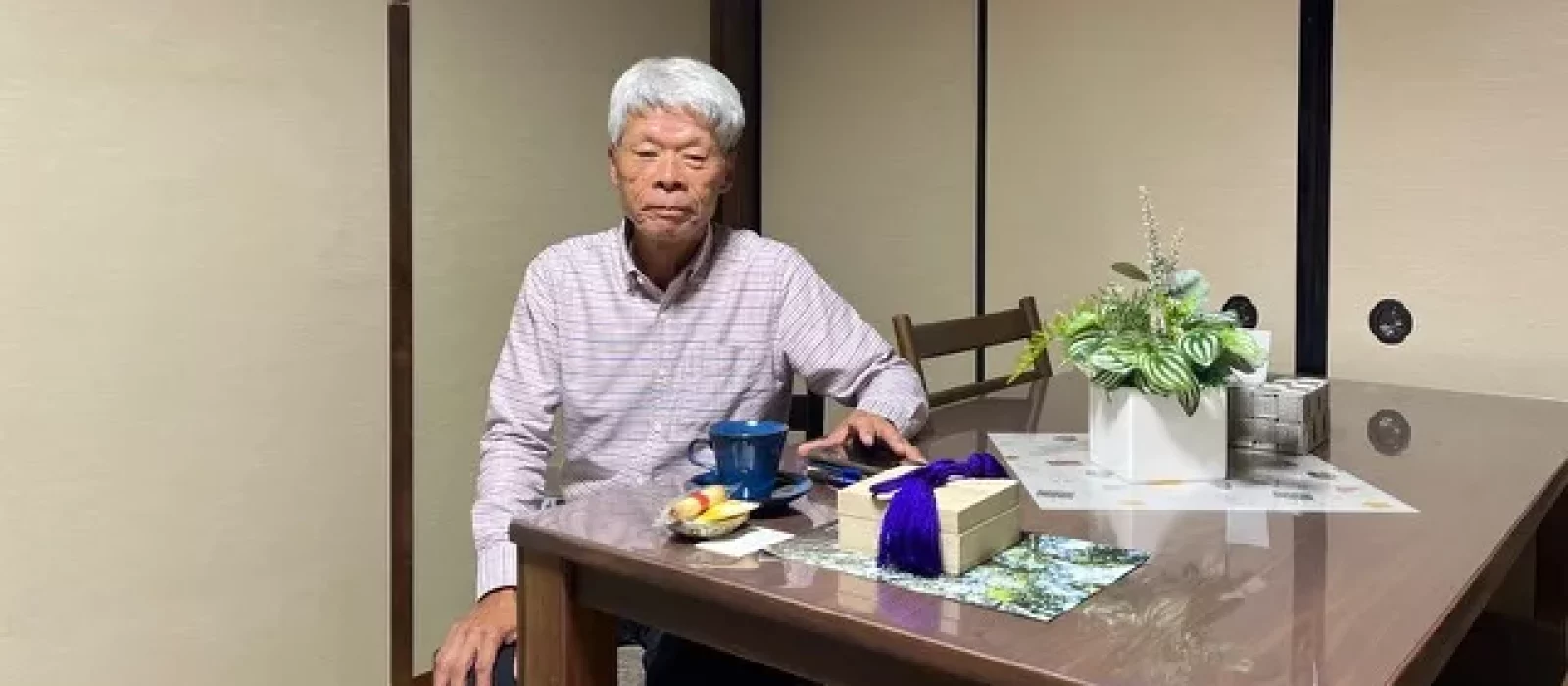Kami are the gods in the Shinto belief system. They can live in trees and waterfalls, in rocks and springs. To feel the presence of a kami in nature the word yuniwa is applied: to pray at a pure garden. It is a term I came across in a valley near Tenkawa shrine in the mountains of Kumano. The region had been heavily logged ever since the Meiji restoration and left the once-mixed forest where Japanese oaks and cypress flourished, to a monocultural landscape of hinoki, or Japanese cypresses. Their needles leave the soil over-acidified, and not much else can grow. While the mountains of Tenkawa are still beautiful, with mists rising each morning and clouds climbing up from tree tip to tree tip, some quality feels missing. Perhaps it is the natural and abundant interplay of different organisms, entities, that can be felt as a “presence” in an environment that has all to choose from.
Mr. Inogashira, the keeper of a traditional pilgrimage inn, now in old age, has set up a network of people to re-forest the mountains around Tenkawa shrine. He named it the Yuniwa Project. Behind his house, where a peak called the “ship mountain” arises, the earth washes down after each rain. “We want to invite the presence of a kami back here again. We are now 11 people planting trees to restore the original diverse forests. The hardest things will be to find young people who are willing to take this baton and continue into the future.” Mr. Inogashira dreams of building a ship on ship mountain and to lie there at night, looking up into the Milky Way, feeling one with the universe.
Two weeks later, we are in the city of Fukuoka, near another shrine. The Gagaku player Ko Ishikawa told me that he was once asked to play here. It was here, that he felt the presence of a kami the most.

The shrine was built on Shikashima, an island connected with the land via a small stretch of land, the Uminonakamichi, a path into the sea. To the north, another small island rises from the waters. It can only be reached when the tide is low. Here, so it is said, lies the inner sanctuary of the Shikanoumi shrine, a site to feel the presence of the kami of the Sea, Watatsumi, the dragon God. The shrine was originally opened up by the Azumi people, an ancient seafaring tribe, that connected Japan with Korea and China. They had knowledge of tidal changes, weather patterns and star constellations, frequently crossing the Sea of Japan during the Jōmon period (14000 – 300 BC). In the late 18th century, the “King of Na” seal was found in the Shikaumi shrine precincts, dating back to 57 AD. It was issued by the Emperor Guangwu of Han, China to the Azumi people. It is now considered an important national treasure.
We check the tidal calendar, and Sunday morning at 9.37am should be the perfect time to cross over. I’m not sure what to expect. I have learned to approach shrines with a calm feeling. In the Shinto belief system, to enter a place for experiencing yuniwa, a pure garden, one is invited to show gratitude and turn the eyes inward to a calm spot. One may be given an insight into a matter of the heart.
On the way, we see early surfers and already some people fishing. Suddenly, we are overtaken by ambulances and police cars. Just when we leave the street that connects mainland Japan with Shikaumi island, five fire trucks and emergency vehicles are parked on the side of the road, with everyone rushing to the shore. An accident has occurred by the water. A reminder of the dangers surrounding the sea.

The drive leads us around the eastern edges of the island and we arrive at a small village. Nearby lies the smaller island with the sanctuary. We park the car in front of a high school and set out through reeds, bamboo and camelia thickets. The timing is perfect, but the island is still set apart from land by the sea. The moon is exactly half between full and new and the waters are still too high. I could swim over, but there are signs everywhere warning that the currents here are strong, that this summer alone five people lost their lives swimming.
Women are not allowed to enter through the torii gate on the island but are tolerated to set foot on its beach. I look across to the in-between world that is neither sea nor land and which is uncrossable for me this morning. I ponder what I might have encountered if the sea had given way. I think of my daughters. They will be arriving in Japan soon, and one of them is keen on uniting with the sea. Maybe this time near the shrine is a reminder that while I want to grant my daughters all access to the sea, this are many different kinds of sea and many different kinds of kami. This is not the Mediterranean or the Baltic. One needs to obey different rules to experience the waters. It is vast, this sea, and it asks for our awareness and respect.
